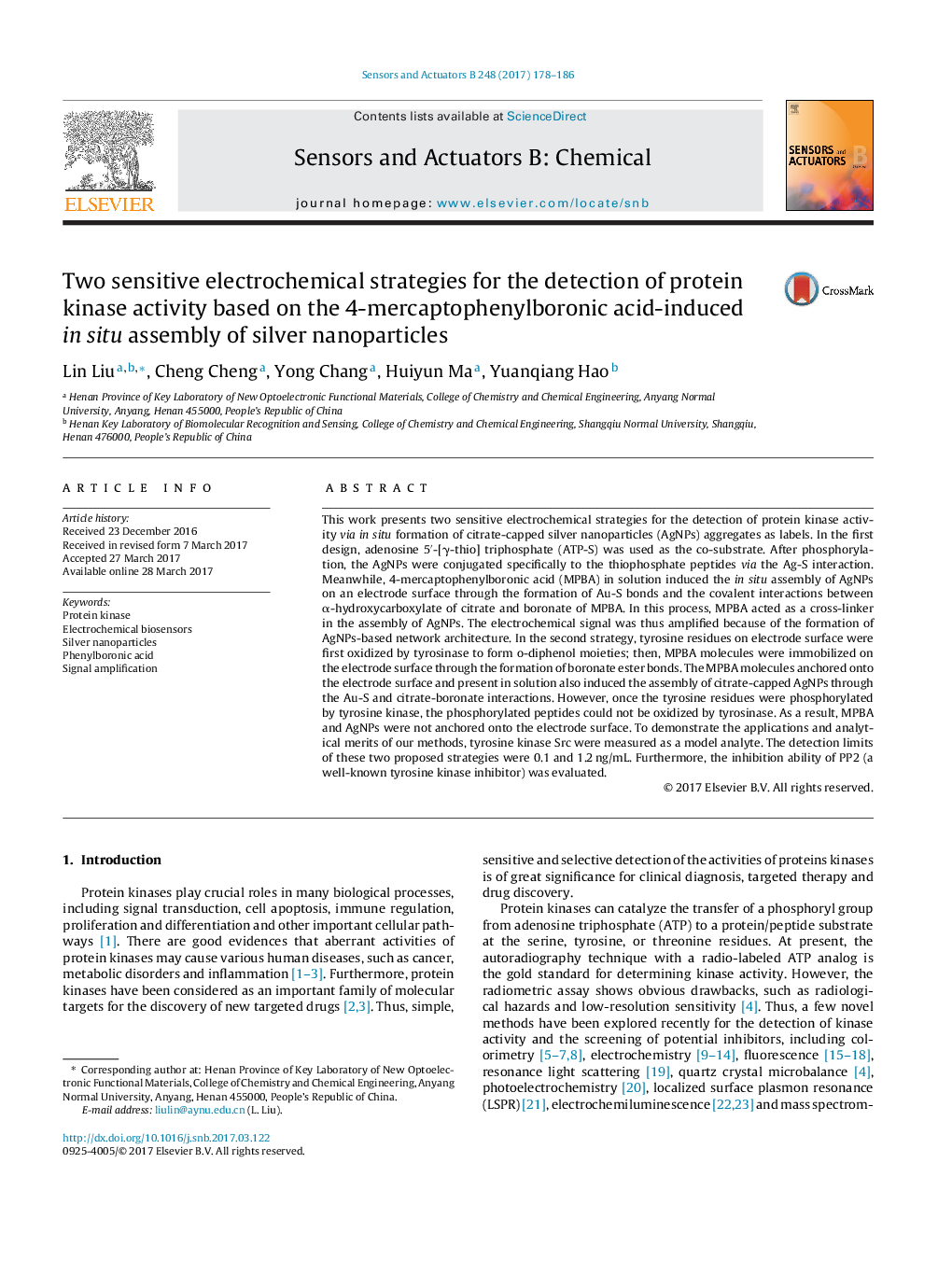| Article ID | Journal | Published Year | Pages | File Type |
|---|---|---|---|---|
| 5009168 | Sensors and Actuators B: Chemical | 2017 | 9 Pages |
â¢We reported two AgNPs-based electrochemical methods for kinase activity detection.â¢4-Mercaptophenylboronic acid induced the in situ formation of AgNPs aggregates.â¢The assembly of AgNPs is based on the Au-S and boronate-citrate interactions.â¢The detection limits of these two methods for Src were 0.1 and 1.2 ng/mL.
This work presents two sensitive electrochemical strategies for the detection of protein kinase activity via in situ formation of citrate-capped silver nanoparticles (AgNPs) aggregates as labels. In the first design, adenosine 5â²-[γ-thio] triphosphate (ATP-S) was used as the co-substrate. After phosphorylation, the AgNPs were conjugated specifically to the thiophosphate peptides via the Ag-S interaction. Meanwhile, 4-mercaptophenylboronic acid (MPBA) in solution induced the in situ assembly of AgNPs on an electrode surface through the formation of Au-S bonds and the covalent interactions between α-hydroxycarboxylate of citrate and boronate of MPBA. In this process, MPBA acted as a cross-linker in the assembly of AgNPs. The electrochemical signal was thus amplified because of the formation of AgNPs-based network architecture. In the second strategy, tyrosine residues on electrode surface were first oxidized by tyrosinase to form o-diphenol moieties; then, MPBA molecules were immobilized on the electrode surface through the formation of boronate ester bonds. The MPBA molecules anchored onto the electrode surface and present in solution also induced the assembly of citrate-capped AgNPs through the Au-S and citrate-boronate interactions. However, once the tyrosine residues were phosphorylated by tyrosine kinase, the phosphorylated peptides could not be oxidized by tyrosinase. As a result, MPBA and AgNPs were not anchored onto the electrode surface. To demonstrate the applications and analytical merits of our methods, tyrosine kinase Src were measured as a model analyte. The detection limits of these two proposed strategies were 0.1 and 1.2 ng/mL. Furthermore, the inhibition ability of PP2 (a well-known tyrosine kinase inhibitor) was evaluated.
Graphical abstractDownload high-res image (118KB)Download full-size image
